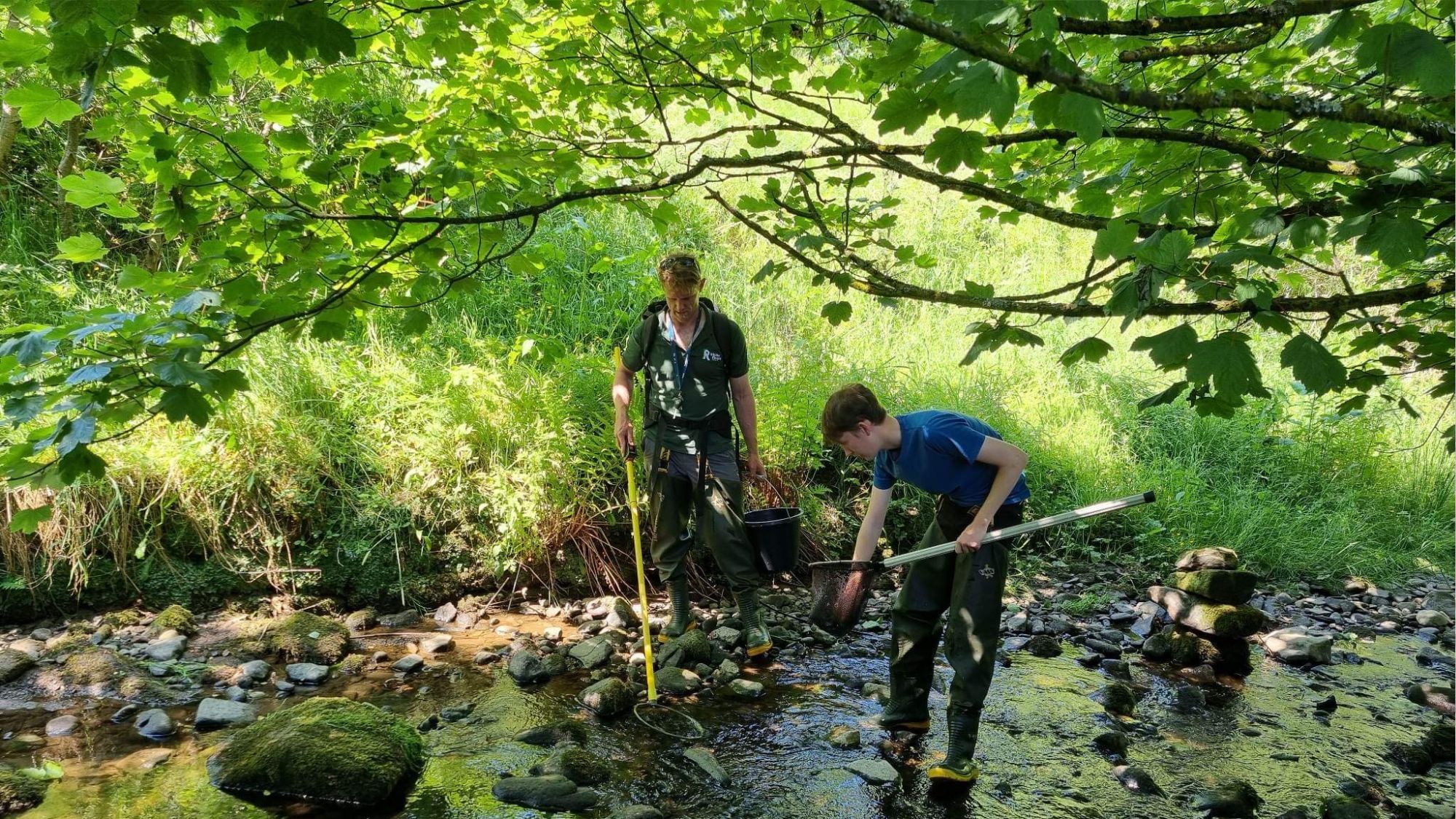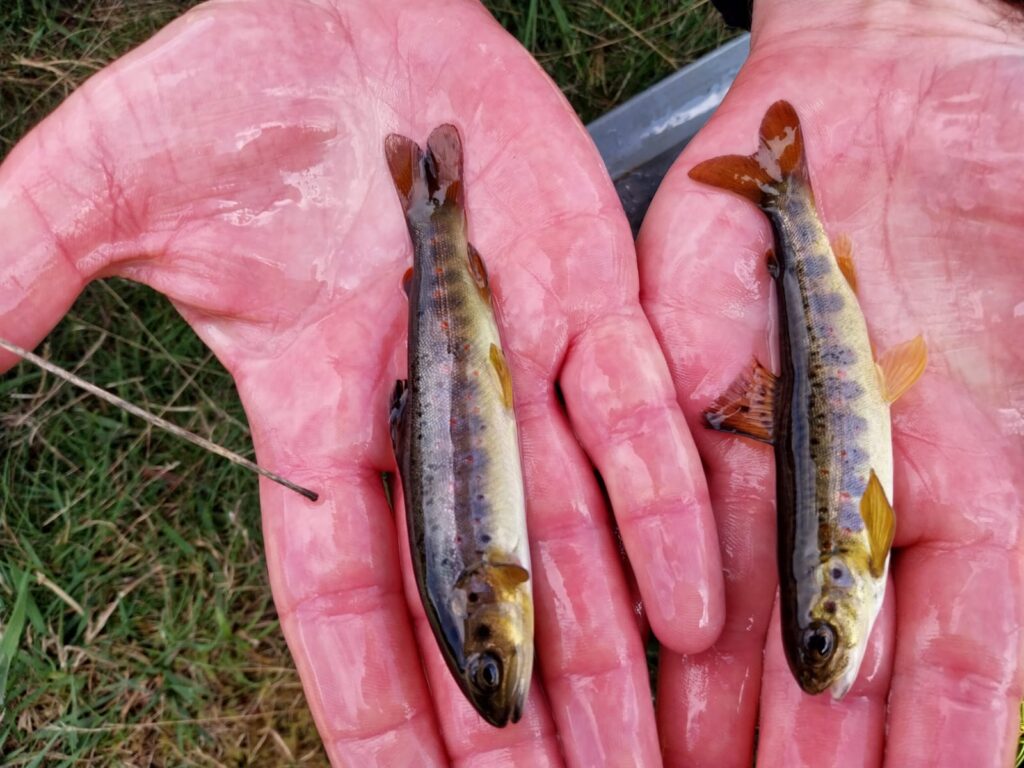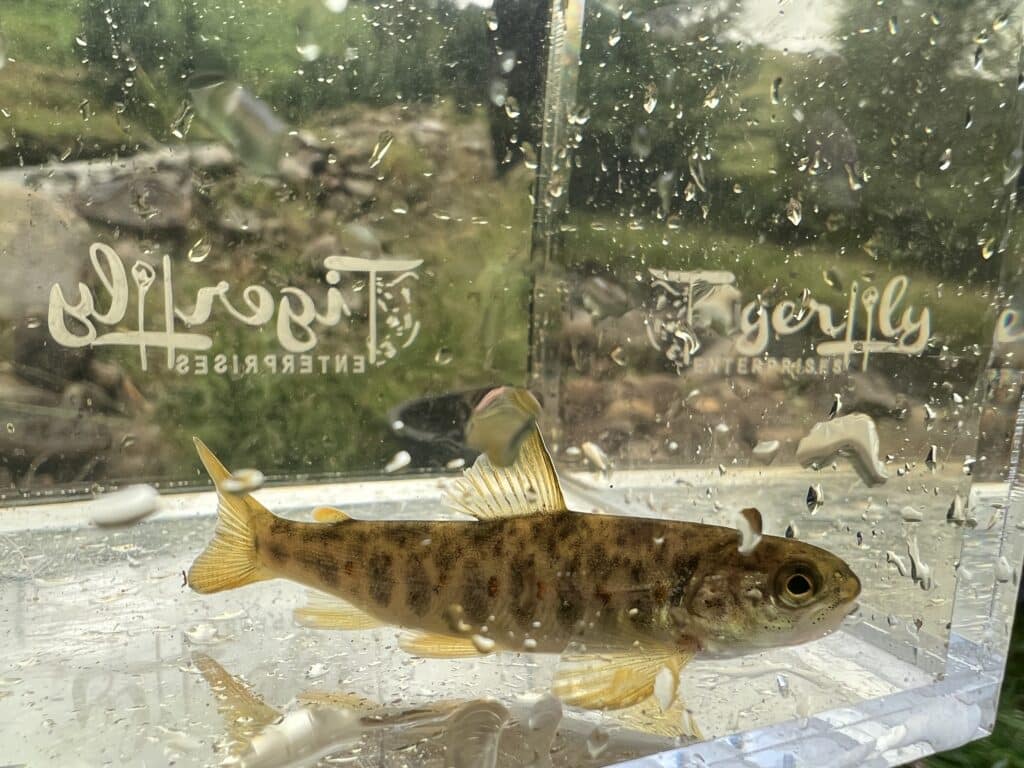
Exploring the Depths
Electrofishing for Conservation and Data-Driven River Restoration
Ribble Rivers Trust strive to protect and restore the Ribble catchment’s rivers, and understanding the intricate dynamics of our river ecosystems is a huge, and very important part of our work. One technique that plays a crucial role in our data collecting efforts is electrofishing.
Electrofishing is a technique widely used by scientists and fisheries managers to survey rivers and assess the fish species present within them.

Electrofishing involves the controlled use of electricity to temporarily stun fish. This allows them to be carefully captured, examined, and released unharmed.
The process begins with an electrofishing backpack. This portable powerhouse delivers a high voltage charge into the water using two electrodes- an anode and a cathode. Don’t worry, our team always wear rubber waders to prevent any accidental electric shock!
When the backpack is triggered near a fish, the electric current affects the fish, causing an muscular spasm. This convulsion prompts the fish to swim towards the ring-shaped, pole-mounted anode. A second team member, equipped with a net, stands near the anode to catch the temporarily disoriented fish.
Keeping our fish friends safe!
As you’ve probably guessed, the very last thing we’d ever want to do is harm a fish. After all, we’re dedicating our time to conserving our rivers and their residents! Electrofishing may sound intense, but fish welfare is always a top priority. The stunning effect caused by the electric current is temporary and does not cause permanent harm. It allows the scientists to safely handle the fish, check their health, measure their size, and collect important data without inflicting any lasting damage.
Plus, our electrofishing team are professionals! All of our team follow strict guidelines to keep stress levels at a minimum and ensure the fish receive the utmost care. Once the necessary data has been collected, the fish are promptly released back into the river. This allows them to continue their natural behaviors and contribute to the river’s ecosystem.
What do we do with the electrofishing data?
Why do we go through all this trouble? All of this data plays in driving our conservation efforts. The information collected during electrofishing surveys provides insights into the fish populations within a river, including species composition, abundance, size distribution, and health.
This data helps us to understand the health of fish communities, and the rivers they live in. It also helps identify the presence of endangered or invasive species, monitor the impacts of pollution and habitat degradation, and assess the effectiveness of conservation and restoration initiatives.
Furthermore, by monitoring changes in fish populations over time, our team can make informed decisions and create science backed strategies to protect and restore river ecosystems.


